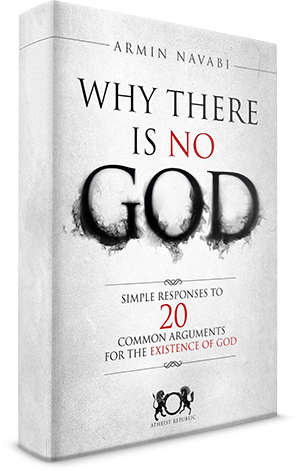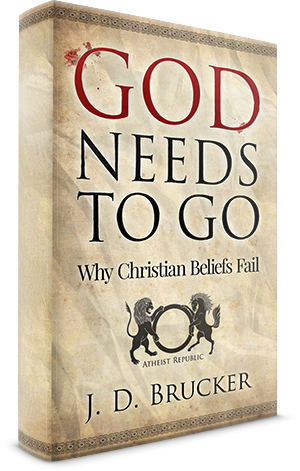
Humans are not alone in the experience of grief or in the mourning of death. Wildlife documentaries are rife with images of orphaned infants pawing and whimpering over the lifeless bodies of their mothers. But there is no evidence that they believe in an afterlife. Primates have self-identity and share the six universal emotions, arguably some of the more complex ones, but they are not religious. The prerequisite for religiosity is a large neocortex which is 80% of the total brain mass in humans and 50% in Chimpanzees. [1]
Supernatural beliefs are not unique to Homo Sapiens. There is evidence that Homo Neanderthalensis buried their dead, red ochre was found in burial sites in Africa and Israel, and palaeolithic artefacts have been found alongside the remains of Homo Heidelbergensis. These tools would have been vital for everyday survival. They would have been precious and highly valued. There is no practical purpose in the internment of these objects, in their inclusion in burial rites. They must have believed the instruments could be utilised by the deceased. They must have believed in an afterlife.
With a larger neocortex arose de-coupled cognition — the imagined communication with a non-present person. This ability, this perceived connection, does not cease when we lose someone. This continued interaction with the dead, conjoined with the desire to meet them again, engenders belief in unearthly existence, it engenders belief in an afterlife.
Religiosity arose through exaptation, a by-product of other mechanisms for protection. [2] Our brains have evolved to find patterns, to discern meaning. It is a short step from seeing faces in clouds and hearing voices in the wind, to perceiving supernatural motifs and explanations.
Most of our contemporary knowledge is counter-intuitive. Sickness was caused by demonic spirits until germ theory was posited. Lightning was perceived as the wrath of God until Benjamin Franklin demonstrated how the Lord's anger could be rendered impotent with a brass wire, a knitting needle and a few small staples. It is our nature to infer an agent behind events, an agent created in our own image. Contemporary believers often conceptualize God in anthropomorphic terms even though this contradicts more complex theological doctrines. [3] It is what our brains have evolved to do: to fill in the gaps, to instil significance, to simplify.
While self-awareness has been demonstrated in other mammalian animals, fear of death has not. At some point our brains became sufficiently complex to conceive of our own demise. This dark fear, lurking in the back of our minds, a continual shadow, following us, haunting us, this is the human condition, our existential angst—the psychological conflict between our desire to live and the inevitability of our demise. [4] The idea of our obliteration from the earth, our death, our fear of it, haunts humanity, and we strive beyond all else to deny this final destination, the place where all our memories and dreams are erased, gone and dead.
We are not empty vessels on to which sense datum is imprinted. Beliefs are the mental architecture through which we interpret the world. Perception is a creative act that involves the senses, memory, emotion, hopes, and fears, and the blanks are filled in with expectation. This in turn becomes a memory and part of the filter. [5] The beliefs that we hold, religious or otherwise, are the lenses through which we view and understand the world.
Our cognitive goal is not one of truth but of validation. Opposition results in cognitive dissonance, a psychological conflict that is seldom resolved by the abandonment of belief. Consonance is restored through refutation, support, and proselytism. [6] In 1958, a cult portending Armageddon believed that they alone would be saved by a UFO. When the world did not end, they did not abandon their faith, they incorporated the new information into their belief system—they had not been duped, they had not been mistaken—the aliens had granted humanity a second chance. [7]
When anybody, a believer or a scientist, is confronted with refutation, evidence that jeopardises their work, theories they have spent years or even a lifetime researching and promoting, they do not simply abandon their position, whether religious or secular—they look for a way to diminish or circumnavigate the threat. We all share this mechanism, this defect that leads us away from truth and into the unbridled defence of our own doctrines.
Religiosity is a bi-product of other evolved traits. It is an attempt to impose meaning on the world, to avoid the inevitability of non-existence. Supernatural belief can provide solace and meaning, but only if the inherent contradictions are ignored, if they are swept under the carpet of dogma and blind faith. Renouncing theology is a desire to grasp the universe as it truly is, a refusal to persist in delusion, even if that delusion provides consolation.
With the shackles of religion broken and rusting in the gutter, we are no longer bound by another world, no longer under the dominion of a celestial power, we are free, and this is what the pious fear. The world is neither hostile nor benign, it is entirely indifferent. It does not care which way we pray or to which god, whether we sleep with men, women or children, whether we commit genocide or rape, whether we blaspheme or burn religious books. Life is objectively valueless on the blind repose of indifference but that does not mean we cannot instil value.
Mystery, love, beauty, pain, they still remain, and all of it should be embraced far more intensely. Pain should be eased, sadness consoled, and love and joy grasped with ferocity. Life has no meaning unless we give it one. Virtue, good and evil, they are just words and meaningless unless we breath life into their desecrated carcasses. Some may find meaning in art, literature, or science, some may find it in love, or in the eyes of their children, but the responsibility to discovery it is our own. We will die, we will cease to exist, but how will we be remembered?
References:
[1] Dunbar, R “The Social Brain: Mind, Language in Evolutionary Perspective.”
[2] Jaj, S “A Scientific Explanation of how we came to Believe in God.”
[3] Dunbar, R; Barret, L The Oxford Handbook of Elementary Psychology
[4] Becker, E “The Denial of Death”
[5] Beyerstein, B Simon Fraser University, Vancouver
[6] Harman-Jones; Eddie, A “A Cognitive Dissonance Theory Perspective on Persuasion”
[7] Festinger,L; Riechen, H.W; Schachter,S “When Prophecy Fails”





























